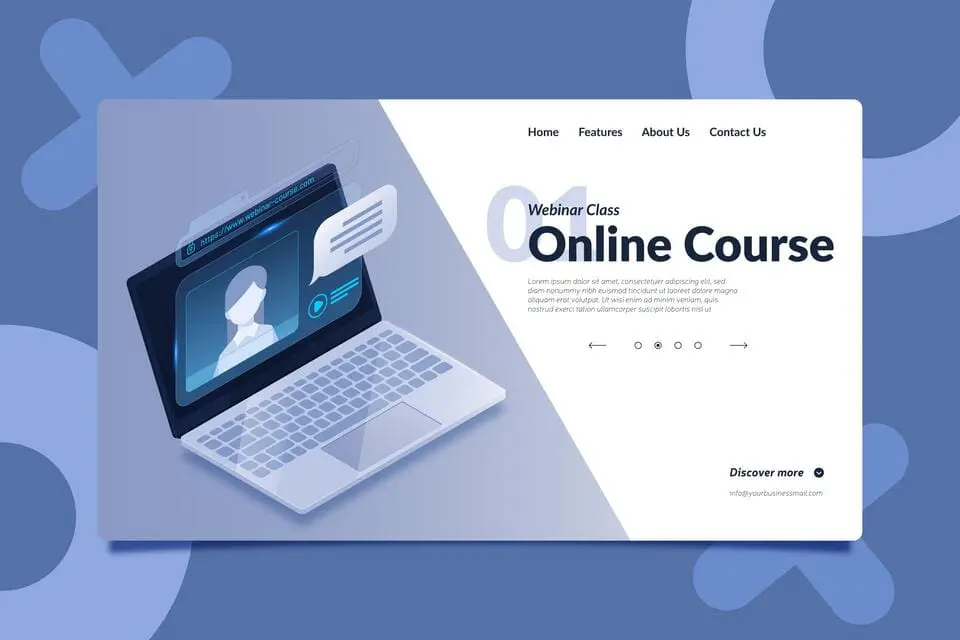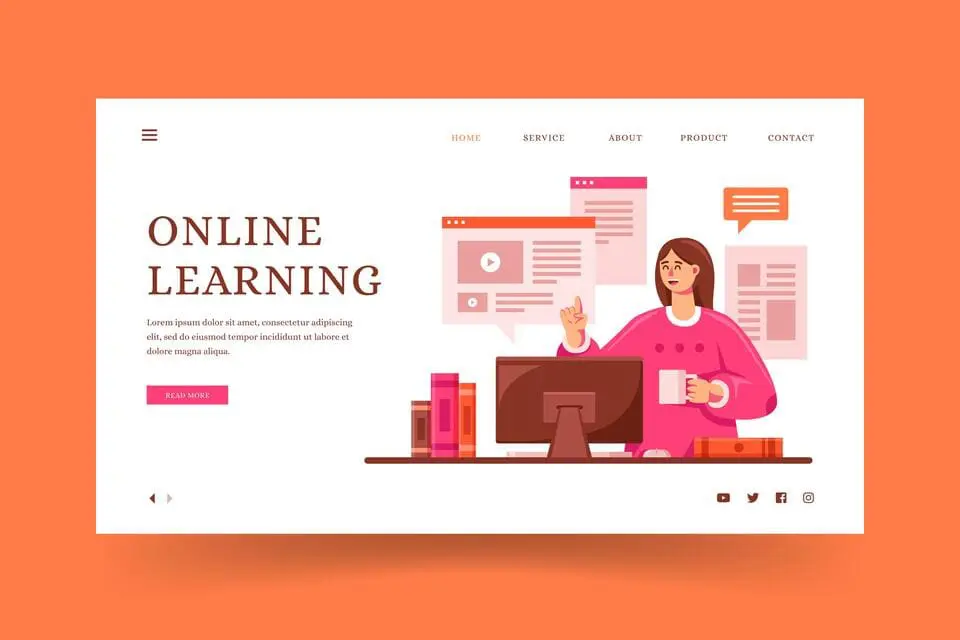Selling Online Courses
If you’ve ever thought about creating and selling online courses, then this comprehensive guide is for you.
Packed with valuable insights and practical tips, it will equip you with all the knowledge you need to successfully dive into the world of online education.
Whether you’re an expert in a particular field or have a passion for teaching.
This guide will show you how to create engaging and effective online courses that will captivate your audience and generate income.
So, if you’re ready to turn your knowledge and experience into a profitable venture, let’s get started on this exciting journey together.

Selling Online Courses: Choosing a Topic for your Online Course
When it comes to creating an online course, choosing the right topic is crucial.
Start by identifying your expertise.
What are you knowledgeable and passionate about?
Consider your skills, experiences, and qualifications, as these will be the foundation of your course.
Select a topic that you are not only knowledgeable in but also genuinely enjoy teaching others about.
In addition to your expertise, it’s essential to research market demand.
Is there a need for your chosen topic?
Look for trends and popular subjects in your industry.
This will help you ensure that there is a market for your course and increase its potential success.
Lastly, consider audience preferences.
Think about the target audience for your course.
What are their interests and needs?
Conduct surveys or market research to gather valuable insights.
By aligning your course topic with what your audience wants, you can create a course that meets their expectations and provides value.
Planning and Structuring your Course
Once you’ve chosen a topic, it’s time to plan and structure your course effectively.
Start by defining clear course objectives.
What do you want your students to achieve by the end of the course?
Setting specific, measurable, achievable, relevant, and time-bound (SMART) objectives will help guide your content creation process.
Next, break down your content into modules and lessons.
Divide your course into logical sections that can be easily navigated by your students.
Each module should cover a specific topic, while lessons within the modules should dive deeper into related subtopics.
This organization will make it easier for students to follow along and track their progress.
Finally, create a course outline that outlines the structure and sequence of your modules and lessons.
This will serve as a roadmap for both you and your students, ensuring that all the necessary information is covered in a logical order.
A well-designed outline will provide a clear flow of content and prevent any confusion or overwhelm.

Selling Online Courses: Creating Course Content
The content of your online course is the heart of your offering.
To create engaging and effective course content, you need to consider a few important factors.
First, select appropriate media to convey your lessons.
Depending on your topic and teaching style, consider using a combination of videos, text-based lessons, audio recordings, and visual aids.
This variety will help cater to different learning preferences and keep your students engaged.
Video lessons are particularly popular and effective in online courses.
Create high-quality, engaging video lessons that clearly explain the concepts and provide real-world examples.
Use visuals, animations, and demonstrations to enhance the learning experience.
The more captivating and informative your videos are, the more likely your students will stay engaged and retain the information.
Furthermore, design interactive quizzes and assessments to reinforce learning.
Break up your course content with quizzes or assessments after each module or lesson to gauge your students’ understanding.
Use multiple-choice questions, fill-in-the-blanks, or even practical assignments to assess their knowledge and provide valuable feedback.

Recording and Editing Video Lessons
When recording video lessons for your online course, it’s essential to set up a dedicated recording space.
Choose a quiet area with good lighting and minimal background distractions.
Consider using a clean and visually appealing backdrop that aligns with the branding of your course.
Ensure that your recording space is well-equipped to capture clear audio and video.
Choosing the right equipment and software is also crucial for high-quality video production.
Invest in a good camera that can produce clear and sharp videos.
A tripod or stable mount will help ensure steady footage.
A quality microphone will capture crisp audio, enhancing the overall experience for your students.
In terms of software, there are many options available, ranging from free to paid, depending on your budget and technical requirements.
While recording, remember to speak clearly and confidently.
Use a conversational tone to make your students feel comfortable and engaged.
After recording your lessons, editing is necessary to enhance the video quality and remove any mistakes or distractions.
Use video editing software to trim, cut, add captions, and improve the overall flow of your lessons.
This will give your course a polished and professional look.
Designing Course Materials and Resources
In addition to video lessons, creating visually appealing slide decks is an excellent way to support your course content.
Use presentation software or design tools to create visually appealing slides that complement your teaching.
Incorporate relevant images, graphs, and diagrams to make the information more visually engaging and easier to understand.
Remember to keep the slides simple, concise, and visually consistent throughout the course.
Beyond slide decks, consider developing supplemental materials to enrich your course.
These can include handouts, worksheets, checklists, or additional reading resources.
By providing extra materials, you offer your students a comprehensive learning experience and give them opportunities to apply what they have learned.
To further enhance the learning experience, provide downloadable resources such as PDF guides, templates, or reference materials.
This allows your students to access relevant information offline and refer back to it whenever needed.
Offering downloadable resources demonstrates your commitment to supporting your students’ learning journey.
Setting Up an Online Course Platform
After creating your course content, it’s time to set up an online course platform where you can host and deliver your course to students.
Research and choose a course platform that aligns with your needs and budget.
Consider factors such as ease of use, customization options, pricing, and available features.
Some popular course platforms include Teachable, Thinkific, and Udemy.
Once you’ve selected a platform, set up your course structure and enrollment process.
Create different sections or modules for your course and determine how students will progress through them.
Decide whether you want to offer any prerequisites or prerequisites for specific modules.
Set enrollment requirements, such as payment or registration, to ensure that only eligible students can access your course.
Customize the course interface to align with your branding and create a consistent user experience.
Add your logo, choose a color scheme, and customize the course layout and design.
This will help establish your course’s unique identity and make it more visually appealing to potential students.
Pricing and Promoting your Online Course
Determining the value of your course is an important step in pricing it correctly.
Consider factors such as the depth of knowledge you’re providing, the level of expertise you possess, and the potential impact on your students’ lives or careers.
Research similar courses in the market to get an idea of pricing ranges.
Ultimately, choose a price that reflects the value you offer while also considering your target audience’s willingness to pay.
Develop pricing strategies to attract students and maximize your revenue.
Consider offering payment plans or bundling your course with additional resources or bonuses.
Discounts for early-bird registrations or limited-time promotions can also create a sense of urgency and incentivize sign-ups.
Once your course is priced, it’s time to create a marketing plan to promote it and attract students.
Start by building anticipation with email marketing.
Generate interest in your course by sharing valuable content related to your topic, offering free resources, or providing sneak peeks of what students can expect.
Use catchy subject lines and personalized emails to engage your audience and drive them to your course sales page.
You can also leverage social media platforms to share insights, testimonials, or behind-the-scenes content related to your course.
Engage with your audience, answer questions, and build relationships.
Consider collaborating with influencers or partners who have a similar target audience to expand your reach.

Launching your Online Course
The course launch date is an exciting milestone in your online course journey.
Choose a date and create a sense of excitement and anticipation among your target audience.
Increase the chances of attracting early sign-ups by offering limited-time discounts or bonuses.
This adds value to your course and motivates potential students to take action before the offer expires.
Make sure to communicate the launch date through all your marketing channels.
Send email reminders, update your website or blog, and utilize social media platforms to spread the word.
Utilize testimonials from beta testers or past students to build credibility and showcase the results they achieved through your course.
During the launch, be prepared to answer inquiries promptly and provide top-notch customer support.
Engage with potential students through live chats, social media comments, or email correspondence.
This personalized approach can help build trust and encourage more sign-ups.
Managing and Optimizing your Course
After the launch, it’s important to actively manage and optimize your course to ensure its ongoing success.
Monitor student progress and engagement through course analytics and data.
Identify any areas where students are struggling or disengaging and make adjustments to improve their learning experience.
Offer timely support and guidance to help them overcome obstacles and stay motivated.
Collect and analyze feedback from your students to understand their needs and preferences better.
This feedback can be gathered through surveys, assessments, or direct communication.
Use this feedback to make improvements to your course content, structure, or delivery.
Continuously updating and enhancing your course based on student feedback will increase its value and keep it relevant for future students.
Expanding your Online Course Business
Once you have established your online course business and have a successful course under your belt, consider expanding further.
One way to do this is by creating advanced or specialized courses that delve deeper into specific topics related to your expertise.
These advanced courses can cater to students who have already completed your initial offering and are looking to further their knowledge and skills.
Collaboration with other experts in your field is another excellent way to expand your online course business.
Partnering with complementary experts or thought leaders can help you reach a wider audience and tap into their existing networks.
Consider co-teaching a course or featuring guest instructors to bring diversity and fresh perspectives to your offerings.
Affiliate marketing is another avenue to explore.
By partnering with affiliates, you can leverage their reach and influence to promote your course in exchange for a commission.
This can be an effective way to attract new students and increase your course sales.
Selling Online Courses Conclusion
In conclusion, creating and selling online courses requires careful planning, strategic thinking, and a passion for teaching.
By choosing a topic you’re knowledgeable and passionate about, researching market demand, and considering audience preferences, you can ensure that your course will be successful.
Planning and structuring your course, creating engaging content, and setting up an online course platform are critical steps in creating a high-quality course.
Pricing and promoting your course, launching it with excitement, managing and optimizing its performance, and expanding your business are also essential aspects to consider.
With dedication and a customer-centric approach, you can create online courses that provide value to your students and pave the way for a successful online course business.







